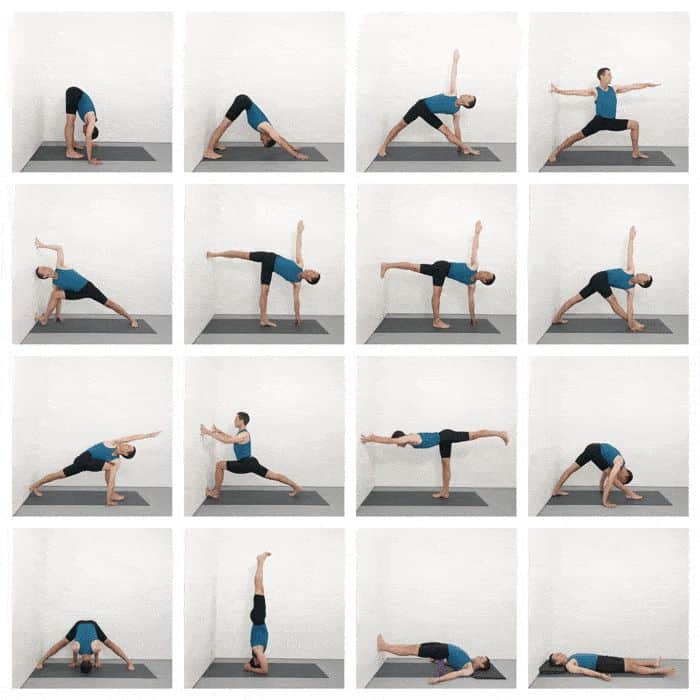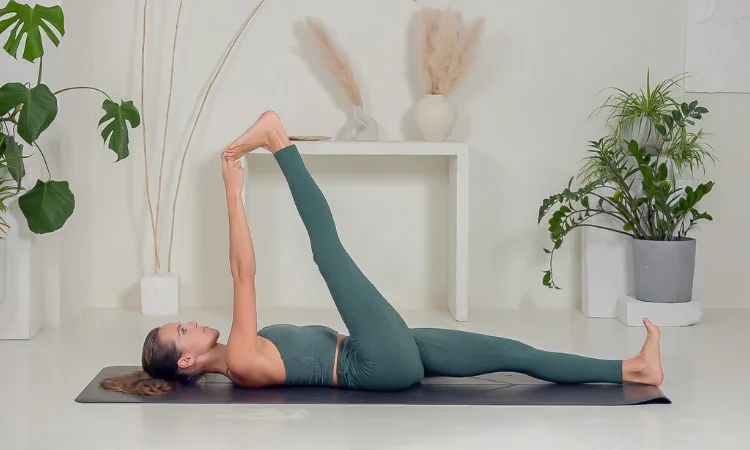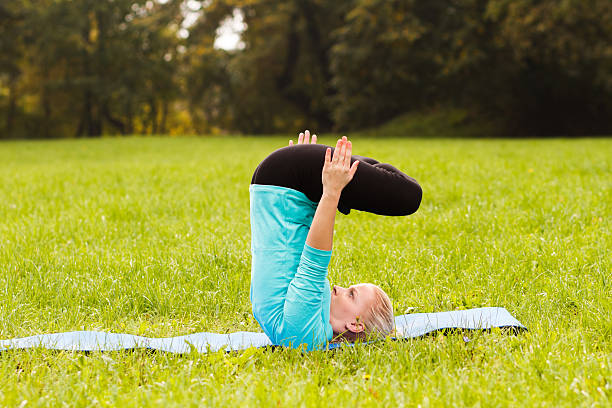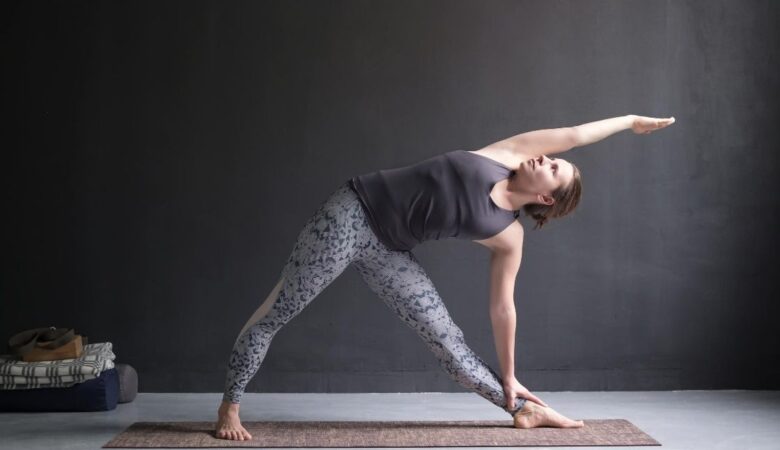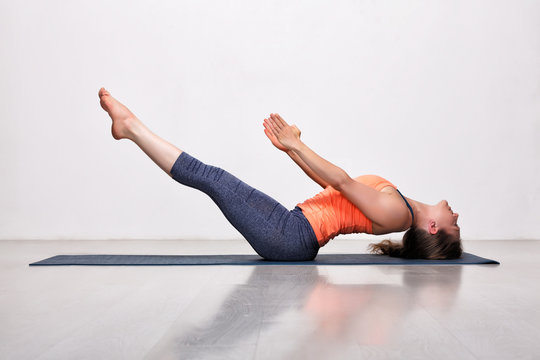Iyengar Yoga, developed by B.K.S. Iyengar, is a form of Hatha Yoga that emphasizes precision, alignment, and the use of props. It is widely respected for its therapeutic applications and accessibility for practitioners of all levels. Iyengar Yoga Sequences are intelligently crafted to create a holistic physical, mental, and emotional experience.
Table of Contents
Core Principles of Iyengar Yoga:
Alignment:
Precise alignment of the body in each posture is essential. This protects joints and tissues while enhancing the effectiveness of the pose.
Use of Props:
Blocks, belts, bolsters, blankets, and ropes are used to assist and support the body, making poses accessible to everyone regardless of flexibility or injury.
Sequencing:
Postures are arranged in a specific order to maximize benefits and ensure safety. For example, standing poses may be followed by inversions, then seated poses, and finally restorative postures.
Timing:
Poses are held for longer durations compared to flow-based yoga styles. This cultivates strength, stamina, and introspection.
Observational Learning:
Iyengar Yoga encourages keen observation of bodily sensations and mental responses, promoting mindfulness.
Benefits of Iyengar Yoga:
- Improved Posture and Body Awareness
- Relief from Chronic Pain and Injuries
- Stress Reduction and Mental Clarity
- Enhanced Strength, Flexibility, and Balance
- Support in Managing Health Conditions (e.g., arthritis, scoliosis, depression)
Structure of an Iyengar Yoga Sequence:
A standard Iyengar sequence typically follows this progression:
- Preparatory/Standing Poses
- Inversions and Shoulder/Neck Work
- Backbends
- Twists
- Forward Bends
- Restorative Poses/Pranayama
This structure allows the body to be warmed up, energetically elevated, then cooled and soothed.
Sample Iyengar Yoga Sequence (75–90 mins):
1. Opening and Centering (5 mins)
- Savasana or Corpse Pose with a focus on breath
- Settle the mind and align the body
2. Standing Poses (20 mins)
- Tadasana or Mountain Pose
- Utthita Trikonasana or Extended Triangle Pose
- Virabhadrasana II or Warrior II
- Ardha Chandrasana or Half Moon Pose using a block
- Parsvottanasana or Pyramid Pose
3. Inversions (15 mins):
- Adho Mukha Svanasana or Downward Dog
- Salamba Sirsasana or Headstand – with wall support if needed
- Salamba Sarvangasana or Shoulderstand with blankets
- Halasana or Plow Pose
4. Backbends (10–15 mins):
- Bhujangasana or Cobra Pose
- Urdhva Mukha Svanasana or Upward-Facing Dog
- Ustrasana or Camel Pose
- Setu Bandha Sarvangasana or Bridge Pose with bolster or block
5. Twists (10 mins):
- Bharadvajasana I or Seated Twist with blanket under hips
- Ardha Matsyendrasana or Half Lord of the Fishes Pose
6. Forward Bends (10 mins):
- Paschimottanasana or Seated Forward Bend with a strap if needed
- Janu Sirsasana or Head-to-Knee Forward Bend
7. Restorative and Pranayama (10–15 mins):
- Supta Baddha Konasana or Reclining Bound Angle Pose with bolsters
- Viparita Karani or Legs-Up-the-Wall Pose
- Gentle Ujjayi Pranayama or Victorious Breath
- Final Savasana or Corpse Pose
Props Commonly Used in Iyengar Yoga:
- Blocks – for alignment and support
- Straps – to extend reach or stabilize limbs
- Blankets – for comfort and joint protection
- Bolsters – in restorative poses
- Wall Ropes/Slings – for traction and inversions
Tips for Practicing Iyengar Yoga:
- Attend a certified Iyengar class to learn the correct use of props.
- Do not skip preparatory poses; the order is key to safety and effect.
- Pay close attention to the teacher’s instructions on alignment cues.
- Practice with awareness, noticing subtle physical and mental shifts.
Conclusion:
Iyengar Yoga is a thoughtful and rigorous system ideal for those who value detail, therapeutic benefits, and mindful movement. Whether you’re recovering from injury, seeking structural balance, or exploring meditative asanas, a regular Iyengar practice can significantly enhance your well-being.
FAQ:
Q. What is Iyengar Yoga?
A. Iyengar Yoga is a form of Hatha Yoga founded by B.K.S. Iyengar. It emphasizes precise alignment, structured sequences, use of props, and longer holds in postures to build strength, flexibility, and mindfulness.
Q. Do I need to be flexible to start Iyengar Yoga?
A. No. Flexibility is not a requirement. Iyengar Yoga is accessible to all levels and body types because it uses props to support you wherever you are in your practice.
Q. What props are used, and why?
Common props include:
- Blocks: Bring the floor closer to you.
- Straps: Help reach or hold limbs in place.
- Bolsters & Blankets: Provide comfort and support in restorative poses.
- Chairs, Ropes, and Walls: Aid in deeper alignment and inversions.
Props help maintain correct alignment and reduce the risk of injury.
Q. Is Iyengar Yoga suitable for beginners?
A. Absolutely. It’s one of the best styles for beginners due to the focus on safe, guided movement and step-by-step instruction.
Q. How long is a typical Iyengar Yoga class?
A. A standard class is usually 75 to 90 minutes, with time spent on an Iyengar Yoga Sequence, including standing poses, inversions, and restoratives.
Q. What should I wear to an Iyengar Yoga class?
A. Wear comfortable but fitted clothing so the instructor can see your alignment. Avoid loose or baggy clothes that may interfere with movement or visibility of form.
Q. Do I need to bring my own props?
A. Many studios provide props, but bringing your own mat is recommended. Some practitioners also prefer to bring personal straps or blankets for hygiene and comfort.
Q. Is there a spiritual aspect to Iyengar Yoga?
A. Iyengar Yoga focuses primarily on asana (postures) and pranayama (breath control), which are part of the eight limbs of yoga. While it is not overtly spiritual, the inner discipline, mindfulness, and meditative depth can become profound and transformative over time.
Q. Can I practice Iyengar Yoga at home?
A. Yes! Once you are familiar with the poses and sequences, home practice is encouraged. Props make it easier to practice safely at home. Beginners are advised to learn the basics with a certified teacher before attempting inversions or complex sequences on their own.
Q. How often should I practice Iyengar Yoga?
A. Aim for 2–4 times per week for consistent benefits. Even practicing once a week mindfully can bring improvements in posture, body awareness, and mental calm.
Q. What is a “restorative sequence”?
A. A restorative Iyengar Yoga Sequence includes gentle, supported poses held for extended periods to deeply relax the body and mind. Ideal for stress relief, recovery, and evening practice.
Q. Can pregnant women do Iyengar Yoga?
A. Yes, but under the guidance of an experienced Iyengar teacher trained in prenatal yoga. Many sequences can be modified for different trimesters to support both mother and baby.

